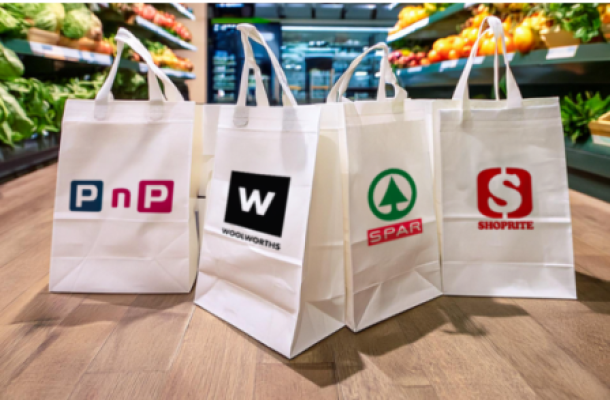How to innovate smarter without sacrificing speed
Today, fast-moving consumer goods (FMCG) manufacturers are under enormous pressure to innovate faster. Whether it's to improve category sales, capitalize on trends or defend market share, Nielsen’s State of Innovation Survey found that 84% of fast-moving consumer goods (FMCG) professionals say they feel more pressure to bring products to market faster today than they did five or 10 years ago.
As a result, manufacturers are cutting corners in an attempt to adopt a more agile innovation process at the expense of valuable consumer feedback and opportunities for refinement—and, in many cases, it's taking a toll on their in-market performance.
According to Jenny Frazier, SVP in Nielsen’s Innovation practice, accelerated innovation often translates to making more decisions based on less insight, who noted at this year’s CoNEXTions event that 78% of marketers state they spend less time than they should on the innovation process when speed is a priority. She added that at the same time, marketers say they’re testing 25% fewer ideas than they feel they should.

So how can companies adapt their innovation processes to be leaner and more efficient while staying focused on addressing consumer needs?
Despite the challenges, Frazier noted four key strategies for FMCG manufacturers to lean on as they seek to get ahead of the game.
IDENTIFY MARKET TRENDS
Traditional innovation timelines don’t factor in the time it takes to identify opportunities. That’s a significant negative for manufacturers pressured by tight timelines because the initial discovery period can be significant and should be accounted for up front. Understanding white space opportunities can be a complicated, unwieldy process. It typically involves synthesizing a lot of data or findings from disparate sources. Moreover, market data is currently coded or structured in a way that’s optimal for trend analysis.
Given the perceived need to act faster, potentially with less insight, 77% of FMCG professionals say they spend less time than they should on at least three phases of the innovation process when speed is a priority. But unfortunately, the data tells us that launching more quickly with less insight isn’t working. In the U.S., for example, first-quarter 2017 retail sales were off by about $3 billion.
Ultimately, you need to have a very clear picture of the consumer need you’re trying to address—and collect the right consumer feedback at key points in the innovation process—rather than making assumptions and rushing through the process.
KNOW WHERE TO PLAY
Having the right information, about the categories and products currently on the shelf, available upfront allows for stronger prioritization that can save time in the long run. Developing discipline early in the innovation process when an initial idea is on the table and may have potential for market success is critical. While subjective, in-house, decision-making is made by executives, pursuing consumer feedback early in the innovation process is to ensure the product is needed/wanted in the market will help ensure the right type of innovation is being developed. Without the right consumer input at this early stage, manufacturers can waste months or years pursuing an idea that never really stood a chance of succeeding in the market.
FOCUS ON INSIGHTS TO DRIVE RETURN ON INNOVATION
Strong trial rates are the outcome of having a strong value proposition that addresses a true consumer need, and repeat rates are the result of a strong product experience. Retailers and manufacturers that can fulfill a consumer need that meets or exceeds their expectations will help to drive continued sales.
For example, manufactures have the opportunity to address key consumer feedback on both the products throughout the development phase. Consumer feedback may point to skepticism about product promises. Manufacturers and retailers have the ability to reassure consumers at point of sale and drive trial by adding visible reasons-to-believe such as professional endorsements and visuals explaining how the product worked. Consumer feedback may also lead to suggested improvements that address consumer perceptions and product efficacy. Remember the consumers are the experts in the products they want to best suit their needs.
OPTIMIZE LAUNCHES QUICKLY
Rushing product innovation is not ideal; however, there are times when optimizing the launch timeline with the right tools and information, both pre and post launch, is vital to its success. If a similar competitive product hits the market first, the opportunity exists to make adjustments to a product pipeline to ensure it comes to market in a comparable timeframe before consumers can form loyalty to another product. Additionally, tracking your own product launches in market, and knowing if underperforming and being agile enough to respond quickly is beneficial. The ability to offer additional marketing support or trail offers to encourage use will help product innovations succeed instead of falling flat with a plan that was likely developed before the launch.
Those who wait too long to adjust timing and optimize launches can run into a myriad of problems. Those who can forecast the right products early in the development process and provide the right marketing support, including an adequate budget, to help launch a new product in the competitive market will stay ahead of their competitors.
Innovating quickly isn’t enough to ensure that manufacturers are reaching the market with new products. Innovating smarter—through technology and fine-tuned methods, improved prioritization early in the process, and a continued focus on the insights that drive sales and flexibility in responding to them quickly throughout the process will ensure the right products that consumes want are reaching the market.
METHODOLOGY
Insights included in this article were derived from Nielsen’s State of Innovation Survey, which was fielded in June 2017.
News Category
- International retailers
- On the move
- Awards and achievements
- Legislation
- Wine and liquor
- Africa
- Going green
- Supplier news
- Research tools
- Retailer trading results
- Supply chain
- Innovation and technology
- Economic factors
- Crime and security
- Store Openings
- Marketing and Promotions
- Social Responsibility
- Brand Press Office
Related Articles

Checkers Sixty60 wipes floor with Pick n Pay As...

Top tips for consumers to combat escalating ele...

Clear winner in South African retail battle

Drinks survey reveals Rooibos as a top choice a...


